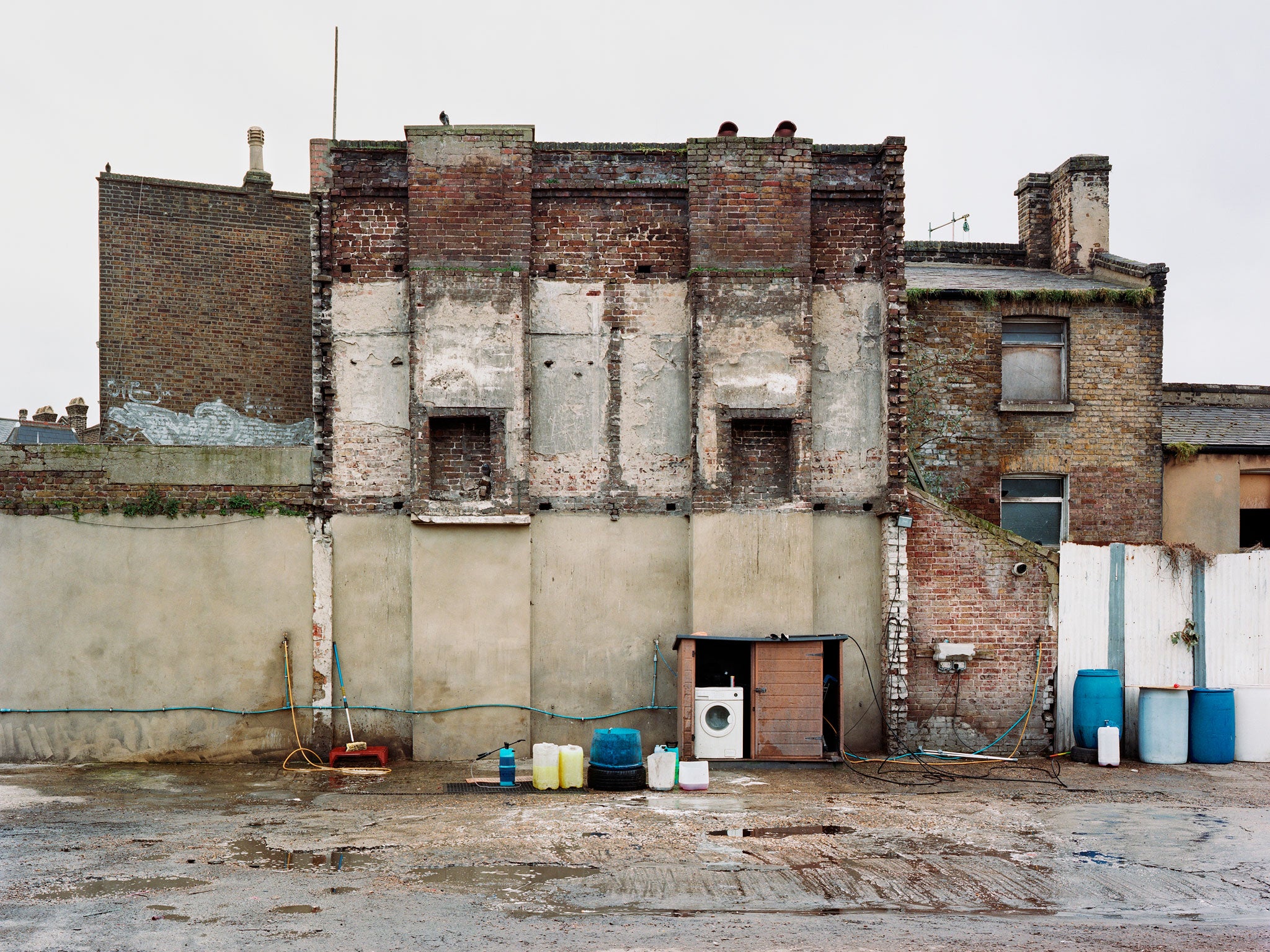Missing Buildings: Thom and Beth Atkinson's photographs capture the scars left on the London cityscape by the Blitz
The brother and sister's haunted portfolio documents the spectral evidence of lost and broken lives 75 years after the Blitz began

In the 1930s, the philosopher Walter Benjamin wrote that Eugene Atget's eerie photographs of old Paris looked like "the scene of a crime". By 1940, the genocidal criminality of Nazism had hounded the exiled and despairing Benjamin to suicide. On 7 September of that year, it arrived in London.
"Black Saturday", the first day of the Blitz, saw 448 people die as waves of German bombers rained destruction on the docks. The last deathly raid on the heart of the capital came on 27 March 1945, when a V2 rocket killed 134 residents of Hughes Mansions in Stepney. Among the victims, 120 were Jewish. By then, almost 30,000 civilian Londoners had died, with a huge proportion of the capital's housing stock – estimates reach 80 per cent in parts of Tower Hamlets – either utterly obliterated or seriously damaged.
This autumn, 75 years after the Blitz began, photographers Thom and Beth Atkinson publish a haunted portfolio of pictures that reveal its lingering traces across the cityscape of London. Even after three-quarters of a century of breakneck re-development, the alert observer need not travel far to spot the tell-tale signs of bomb and rocket strikes. Vacant lots still punctuate busy streets like missing teeth in a punched-out mouth.
Missing Buildings by Thom and Beth Atkinson
Show all 16On naked walls, the ghosts of doors and hearths whisper their stories of night-time terror, chaos and grief. In neighbourhoods where reconstruction has filled in Blitz-cleared spaces, incongruously styled houses or offices stick out like sore, war-bloodied thumbs. In Missing Buildings, the Atkinsons – brother and sister, both in their early thirties – have captured this spectral evidence of lost and broken lives. They have brought into focus the faint shock that even now disturbs the passer-by who notices a sudden void. And they have added their distinctive signature to the "art of ruins" that runs like an elegiac thread through post-war European culture, from the bombsite paintings of Leon Kossoff and Frank Auerbach to WG Sebald's melancholy journeys amid a landscape of shattered memories.
Even as late as the 1970s, every deserted lot and fractured terrace spoke clearly of this post-Blitz afterlife. Since then, the fragmentary archaeology of total war has become less legible. These photographs show that London's urban trauma persists. "The disfigured street" of TS Eliot's "Little Gidding" (the last of his Four Quartets, begun in 1941) will still bare its wounds to the attentive eye. Eliot, an air-raid warden and fire-watcher in the Blitz, had his vision of purgatorial fire "Near the ending of interminable night… After the dark dove with the flickering tongue/ Had passed below the horizon of his homing". Long after the Luftwaffe's dark doves flew home for the last time, the Atkinsons uncover traces of that "interminable night": as hollow monuments, as sites of memory, and, in Benjamin's premonitory words, as scenes of a crime.
'Missing Buildings' by Thom and Beth Atkinson is published by Hwaet Books on 8 October, price £35
Subscribe to Independent Premium to bookmark this article
Want to bookmark your favourite articles and stories to read or reference later? Start your Independent Premium subscription today.

Join our commenting forum
Join thought-provoking conversations, follow other Independent readers and see their replies